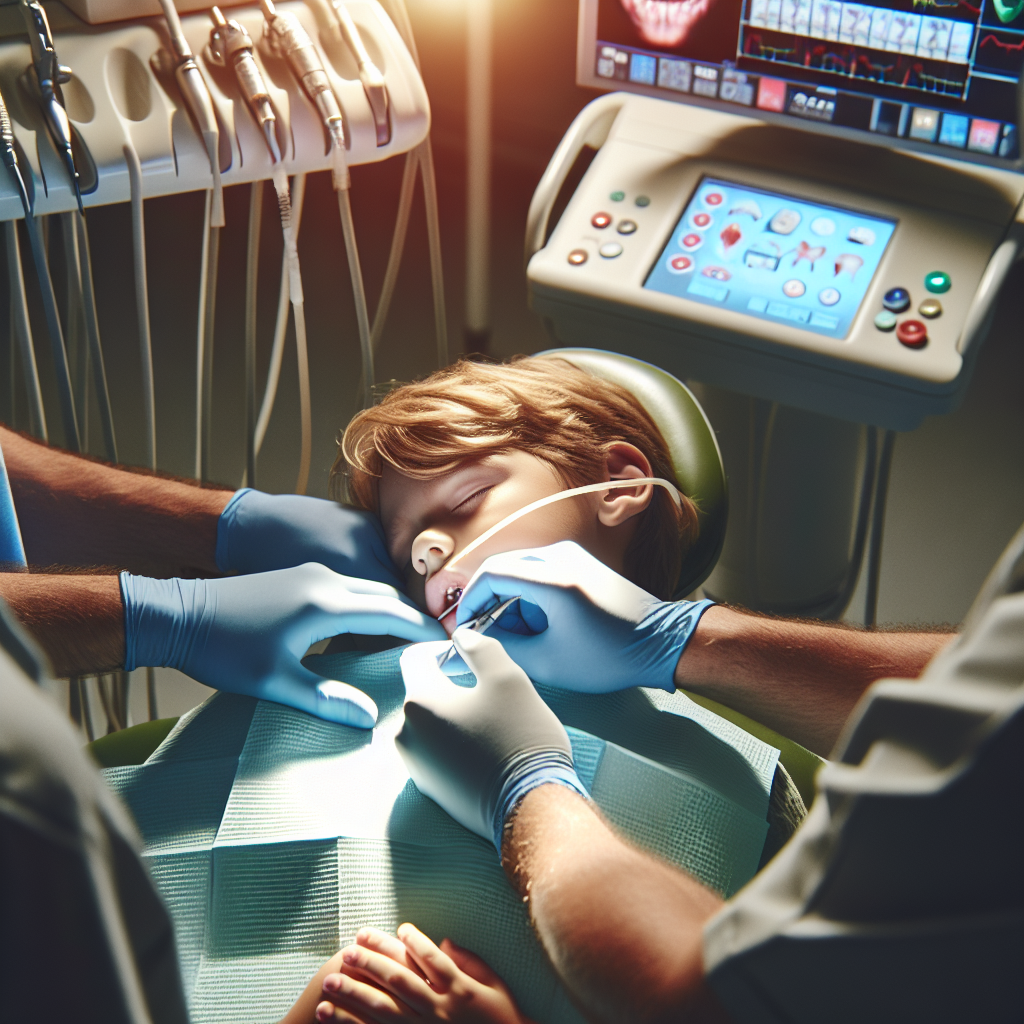A Parent’s Complete Guide to Anesthesia for Children’s Dental Procedures5 min read

As a parent, the thought of your child undergoing anesthesia for a dental procedure can be overwhelming and scary. You want to ensure your child’s safety and comfort throughout the process. This comprehensive guide will walk you through everything you need to know about anesthesia options, safety protocols, preparation steps, and the recovery process for your child’s dental procedure.
Understanding Anesthesia Options for Pediatric Dentistry
When it comes to anesthesia for children’s dental procedures, there are several options available. It’s essential to understand the differences between these options to make an informed decision for your child’s specific needs.
Local Anesthesia
Local anesthesia is the most common type of anesthesia used in pediatric dentistry. It involves numbing a specific area of the mouth using a topical gel or injection. This option is suitable for minor procedures such as cavity fillings or tooth extractions.
Benefits of local anesthesia include:
- Minimal side effects
- Quick recovery time
- Allows the child to remain awake and responsive
Nitrous Oxide (Laughing Gas)
Nitrous oxide, also known as laughing gas, is a mild sedative that helps children relax during dental procedures. It is administered through a small mask placed over the child’s nose, and the effects wear off quickly after the mask is removed.
Advantages of nitrous oxide sedation:
- Reduces anxiety and fear
- Allows the child to remain conscious and responsive
- Has a rapid onset and quick recovery
Intravenous (IV) Sedation
For more complex procedures or children with high levels of anxiety, intravenous (IV) sedation may be recommended. This type of anesthesia is administered through a vein, causing the child to fall into a deep state of relaxation or sleep.
Benefits of IV sedation include:
- Provides a deeper level of sedation
- Allows for longer procedures to be completed in fewer visits
- Ensures the child remains still and comfortable throughout the procedure
Prioritizing Safety: Protocols and Precautions
When it comes to pediatric dental sedation, safety is of utmost importance. Dental professionals follow strict protocols and precautions to ensure your child’s well-being throughout the procedure.
Pre-Procedure Evaluation
Before any anesthesia is administered, your child will undergo a thorough pre-procedure evaluation. This includes a review of their medical history, current medications, and any allergies. The dental team will also assess your child’s overall health and determine the most appropriate anesthesia option based on their individual needs.
Monitoring Vital Signs
During the procedure, your child’s vital signs will be closely monitored. This includes their heart rate, blood pressure, oxygen levels, and breathing. Trained professionals will be present to ensure your child remains stable and safe throughout the process.
Emergency Preparedness
Dental practices that offer pediatric sedation are equipped with emergency equipment and medications. Staff members are trained in emergency protocols and can quickly respond to any unexpected situations that may arise.
Preparing Your Child for Anesthesia
As a parent, you play a crucial role in preparing your child for their dental procedure under anesthesia. By following these steps, you can help ensure a smooth and stress-free experience for both you and your child.
Discuss the Procedure
Talk to your child about the upcoming dental procedure in an age-appropriate manner. Use positive language and avoid words that may cause fear or anxiety. Emphasize that the anesthesia will help them feel comfortable and relaxed during the procedure.
Follow Pre-Procedure Instructions
Your dental team will provide specific pre-procedure instructions regarding food and drink restrictions, medications, and what to wear. It’s crucial to follow these instructions carefully to ensure your child’s safety and the effectiveness of the anesthesia.
“Typically, children should not eat or drink anything for several hours before the procedure to prevent complications during anesthesia.”
Bring Comfort Items
Allow your child to bring a favorite stuffed animal, blanket, or toy to the dental office. These comfort items can help soothe and distract them before and after the procedure.
The Recovery Process: What to Expect
After the dental procedure, your child will enter the recovery phase. Understanding what to expect during this time can help you better support your child’s healing and comfort.
Immediate Post-Procedure Care
Immediately following the procedure, your child will be monitored in a recovery area until the effects of the anesthesia begin to wear off. Dental staff will check their vital signs and ensure they are stable before allowing them to go home.
At-Home Care Instructions
Your dental team will provide detailed at-home care instructions for managing pain, swelling, and any other post-procedure symptoms. These may include:
- Pain medication dosage and frequency
- Soft food diet recommendations
- Oral hygiene instructions
- Activity restrictions
“It’s essential to follow these instructions closely to promote proper healing and prevent complications.”
Follow-Up Appointments
Schedule any necessary follow-up appointments as directed by your dental team. These visits allow the dentist to monitor your child’s recovery progress and address any concerns or questions you may have.
Frequently Asked Questions
Is anesthesia safe for children undergoing dental procedures?
When administered by trained professionals following proper safety protocols, anesthesia is generally safe for children undergoing dental procedures. However, as with any medical procedure, there are potential risks and side effects. Your dental team will discuss these with you and help determine the best option for your child’s unique needs.
How can I help my child feel less anxious about the procedure?
You can help reduce your child’s anxiety by maintaining a positive attitude, discussing the procedure in an age-appropriate manner, and allowing them to bring comfort items to the dental office. Some practices also offer pre-procedure tours or relaxation techniques to help children feel more at ease.
What should I do if my child experiences complications after the procedure?
If your child experiences any unusual symptoms, severe pain, or complications after the procedure, contact your dental team immediately. They will provide guidance on how to manage the situation and determine if additional care is necessary.
Conclusion
Undergoing anesthesia for a dental procedure can be a daunting experience for both children and parents. By understanding the available anesthesia options, safety protocols, preparation steps, and recovery process, you can make informed decisions and support your child’s comfort and well-being throughout the journey.
Remember, your dental team is there to guide you every step of the way. Don’t hesitate to ask questions, voice concerns, and seek support when needed. With proper preparation and care, your child can successfully navigate their dental procedure and maintain optimal oral health for years to come.
